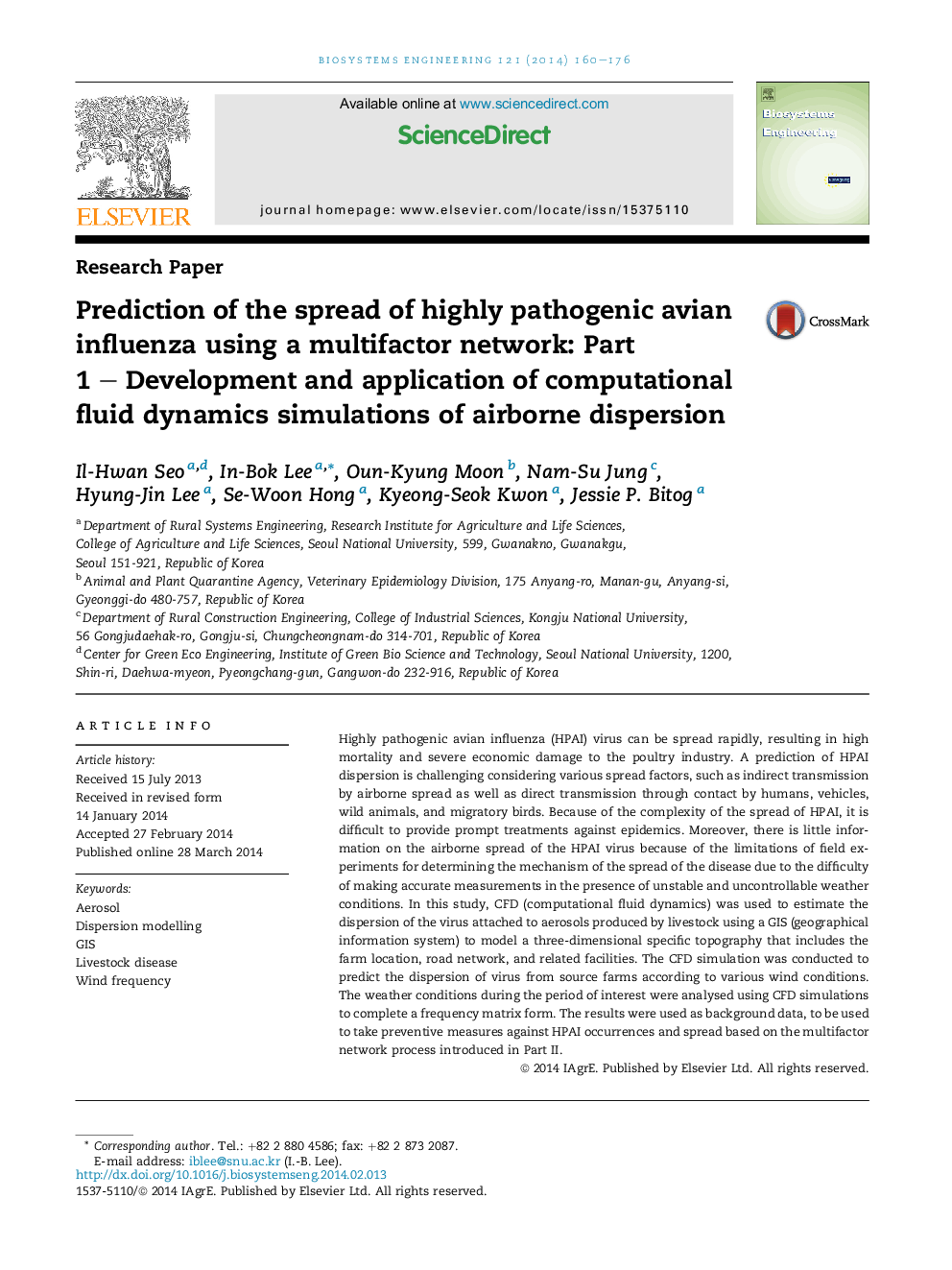| Article ID | Journal | Published Year | Pages | File Type |
|---|---|---|---|---|
| 8055228 | Biosystems Engineering | 2014 | 17 Pages |
Abstract
Highly pathogenic avian influenza (HPAI) virus can be spread rapidly, resulting in high mortality and severe economic damage to the poultry industry. A prediction of HPAI dispersion is challenging considering various spread factors, such as indirect transmission by airborne spread as well as direct transmission through contact by humans, vehicles, wild animals, and migratory birds. Because of the complexity of the spread of HPAI, it is difficult to provide prompt treatments against epidemics. Moreover, there is little information on the airborne spread of the HPAI virus because of the limitations of field experiments for determining the mechanism of the spread of the disease due to the difficulty of making accurate measurements in the presence of unstable and uncontrollable weather conditions. In this study, CFD (computational fluid dynamics) was used to estimate the dispersion of the virus attached to aerosols produced by livestock using a GIS (geographical information system) to model a three-dimensional specific topography that includes the farm location, road network, and related facilities. The CFD simulation was conducted to predict the dispersion of virus from source farms according to various wind conditions. The weather conditions during the period of interest were analysed using CFD simulations to complete a frequency matrix form. The results were used as background data, to be used to take preventive measures against HPAI occurrences and spread based on the multifactor network process introduced in Part II.
Related Topics
Physical Sciences and Engineering
Engineering
Control and Systems Engineering
Authors
Il-Hwan Seo, In-Bok Lee, Oun-Kyung Moon, Nam-Su Jung, Hyung-Jin Lee, Se-Woon Hong, Kyeong-Seok Kwon, Jessie P. Bitog,
